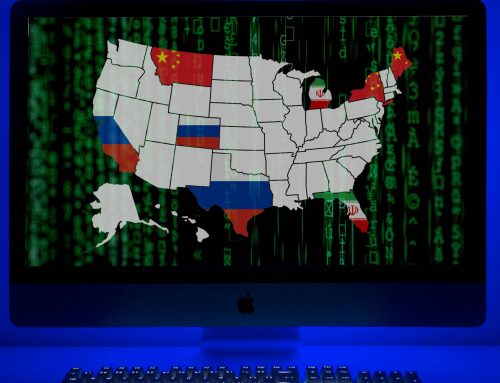Introduction
In a 1972 paper for the United States Air Force Project at RAND, the late Andrew Marshall defined what he called a more “efficient, effective U.S. competitive role.”1 His theory of the case was straightforward: The United States needed to sustain a long-term, strategic competition with the Soviet Union; the nature of that competition was poorly specified, but could be shaped in ways favorable to enduring U.S. advantages; and the United States should therefore assess the balance of strategic forces, clarify its goals, and develop competitive strategies to match its strengths against Soviet weaknesses.
The competition between the United States and China today is different from and far more complex than the U.S.-Soviet competition during the Cold War, notably in the levels of economic interdependence and the role of emerging technologies such as artificial intelligence. China, Russia, and other authoritarian powers seek to achieve strategic advantage through AI-enabled capabilities and systems.2 By one estimate, more than 100 countries purchase surveillance and censorship gear from China and Russia, receive training on these technologies, or simply imitate methods of surveillance and censorship that are designed to control public opinion.3 As the digital and physical environments become intertwined, authoritarian practices in one domain will increasingly encroach upon the other. At stake are the core values of liberty, equality, and justice that underpin free and open societies.
The novel coronavirus pandemic will accelerate these trends. Increased U.S.-China tensions, cascading economic crises, and renewed debates over the resilience of supply chains and the future of digital surveillance are all characteristics of a world that demands global cooperation but sorely lacks it. The fault lines between liberal democracies and illiberal, authoritarian regimes are widening at a time of growing turbulence in the international system. Even before the virus, U.S.-China relations faced a heightened risk of conflict. The years ahead are likely to bring greater turmoil, with AI and other emerging technologies at the center of an extended, continuing strategic competition among the major powers.
In the long-term contest between the forces of democracy and autocracy, the United States should apply Marshall’s counsel and develop more competitive strategies that play to its strengths. The right U.S. approach starts with its broad network of allies and partners. America has formed security guarantees with 52 countries in Europe, Asia, and Latin America, compared with Russia’s five (Armenia, Belarus, Kazakhstan, Kyrgyzstan, and Tajikistan) and China’s one (North Korea).4 The United States benefits from allies that share its values and produce strategic resources in AI, including computer and data science experts; private sectors that are innovative, dominant, and trend-setting; large and diverse pools data on which to train algorithms; governmental research and development (R&D) investments; diplomatic support for initiatives in AI safety and governance; and the clout needed to export norms and best practices internationally. In a world of globalized markets for AI talent and integrated supply chains, an alliance-centric strategy provides a competitive advantage over any single country that attempts to develop a robust AI ecosystem on its own.
A competitive strategy in AI will require the United States and its allies to assess their comparative advantages; identify anomalies and patterns in the strategic choices of authoritarian competitors that are deeply rooted; and match relative strengths against specific areas of weakness.5 This paper focuses on the dynamics between the United States and China in AI. Based on an initial assessment of recent advances and long-term potential, it recommends that democratic nations sharpen their edge in five key areas:
- Hardware edge: exploit hardware chokepoints, leveraging the advantages that democratic nations have in the production of semiconductor manufacturing equipment and advanced AI chips.
- Data edge: develop common standards to share, pool, and store non-sensitive data sets around discrete projects, such as health intelligence and biosecurity, predictive maintenance, and maritime domain awareness; invest in privacy-preserving machine learning; and support research into new techniques for making personal data less relevant to AI systems, such as one-shot learning and advanced simulations.
- Talent edge: develop inter-allied human capital in AI, share best practices, and cultivate democratic networks of AI researchers through exchange programs, joint scholarships, and conference support, while ensuring research security among allies and partners.
- Innovation edge: harness the estimated two-thirds of global R&D that is conducted by democratic nations to foster collaboration in specific areas of promise, such as human-machine teaming methods and verification techniques for complex controls systems and AI-enabled, safety-critical infrastructure.
- Rule-setting edge: shape global norms and standards for AI, reflecting and supporting human rights and liberal values; create the conditions for a common AI market among democratic nations; and extend the benefits of AI to fragile democracies by establishing a multilateral digital infrastructure network.
Please click the link to the right to read the rest of the report.
- A.W. Marshall, Long-Term Competition with the Soviets: A Framework for Strategic Analysis (U) (Santa Monica: RAND Corporation, 1972).
- See, e.g., Alina Polyakova and Chris Meserole, “Exporting Digital Authoritarianism,” Brookings Institution, August 26, 2019; Valentin Weber, “The Worldwide Web of Chinese and Russian Information Controls,” Centre for Technology and Global Affairs, University of Oxford, September 17, 2019; Kara Frederick, Daniel Kliman, and Ely Ratner, “The Low Road: Charting China’s Digital Expansion,” Center for a New American Security, September 4, 2019.
- Weber, “The Worldwide Web of Chinese and Russian Information Controls.”
- Estimates of the number of U.S. allies vary depending on whether one includes formal, mutual defense treaty commitments, non-treaty relationships, defense partnerships, and other strategic alignments. The author’s estimate of 52 U.S. allies is based on the State Department’s list of “U.S. Collective Defense Agreements.” For other estimates and definitions, see Mira Rapp-Hooper, Shields of the Republic: The Triumph and Peril of America’s Alliances (Cambridge: Harvard University Press, 2020); Michael Beckley, “The Myth of Entangling Alliances,” International Security 39, no. 4, (Spring 2015): 7-48; and Adam Taylor, “Map: The U.S. is bound by treaties to defend a quarter of humanity,” Washington Post, May 30, 2015. It is worth noting that measures of formal security guarantees do not capture the bourgeoning China-Russia relationship or China’s expanding science and technology partnerships through the Belt and Road Initiative.
- On the requirements of competitive strategies, see Octavian Manea, “The Art of Tailoring Competitive Strategies,” Small Wars Journal, March 26, 2014. For more on how the United States can compete effectively in AI, see Tim Hwang, “Shaping the Terrain of AI Competition,” Center for Security and Emerging Technology, June 2020.





